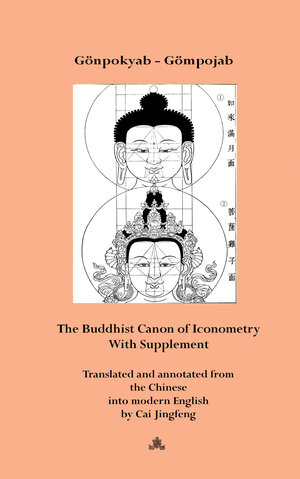
×
![Buchcover ISBN 9783910681002]()
The Buddhist Canon of Iconometry (Zaoxiang Liangdu Jing). With Supplement. A Tibetan-Chinese Translation from about 1742 by mGon-po-skyabs Gömpojab. Translated and annotated from this Chinese Translation into modern English by Cai Jingfeng.
Introduction and editing assistance by Michael Henss.
von Gömpojab - Gönpokyab, Cai Jingfeng und Michael HenssThe text presented in this book The Buddhist Canon of Iconometry is a modern English translation of a Chinese translation Ý Zaoxiang liangdu jing Ý by the Mongol scholar Gömpojab (1669-1750), who translated it from the Tibetan (as for example printed in Narthang-Tanjur of ca. 1730/42, Vol. 123). The Chinese translation was commissioned most probably by the Qianlong emperor (r. 1736-95) and published around 1748 by order of the Second Cangca Qutuqtu (1717-86), who is better known as Rolpai Dorje. The text deals with „Regulations and Rules on Making Statues and Images of the Buddha“, but its additional value must be seen in the various prefaces, supplements and annotations in the Chinese text . - The modern translation into English by Prof. Cai Jingfeng was by no means an easy task: "The Chinese translator from about 1742 wrote in the pedantic style favored by high ranking officials or cultural celebrities. Choosing very archaic and obscure forms, stories alluding to special aspects of the Chinese cultural background, and metaphors of their own fashioning, many passages are difficult to interpret in Chinese, let alone translate into exactly corresponding English phrasing. Furthermore, Buddhist terms are numerous and their Chinese translations from the Sanskrit original are also very archaic and have undergone diversification by different translators. Some of them cannot be found even in the ancient Chinese unilingual specialized dictionaries of Buddhist terms, such as the Buddhist monk Fayun's (1088-1158) Fanyi Mingyi Ji (Collection of Translated Terminology and Their Connotations)."



 Kino@Alte Fabrik: Tagebuch einer Pariser Affäre - (inkl. Pasta-Buffet)
Kino@Alte Fabrik: Tagebuch einer Pariser Affäre - (inkl. Pasta-Buffet)